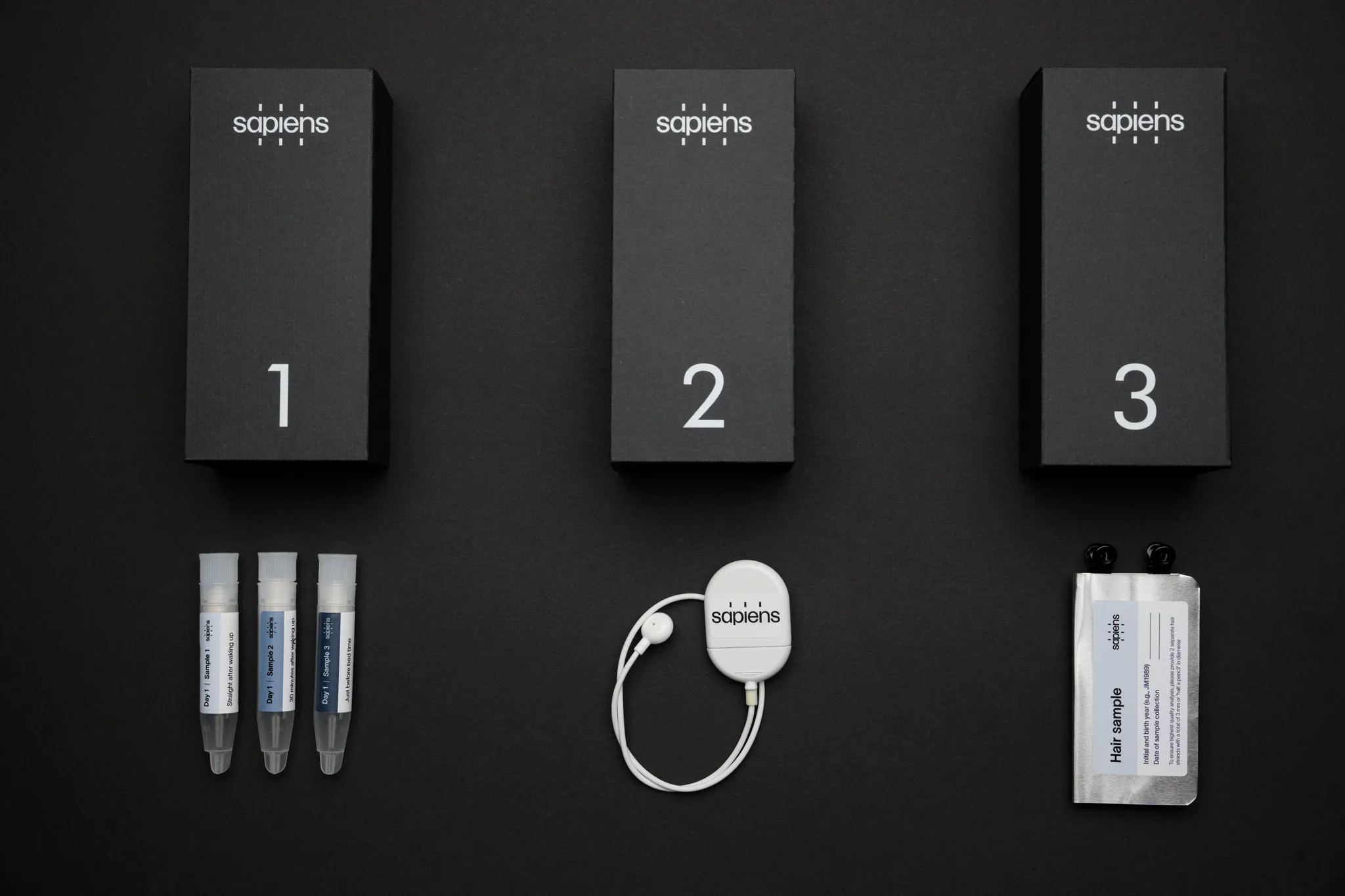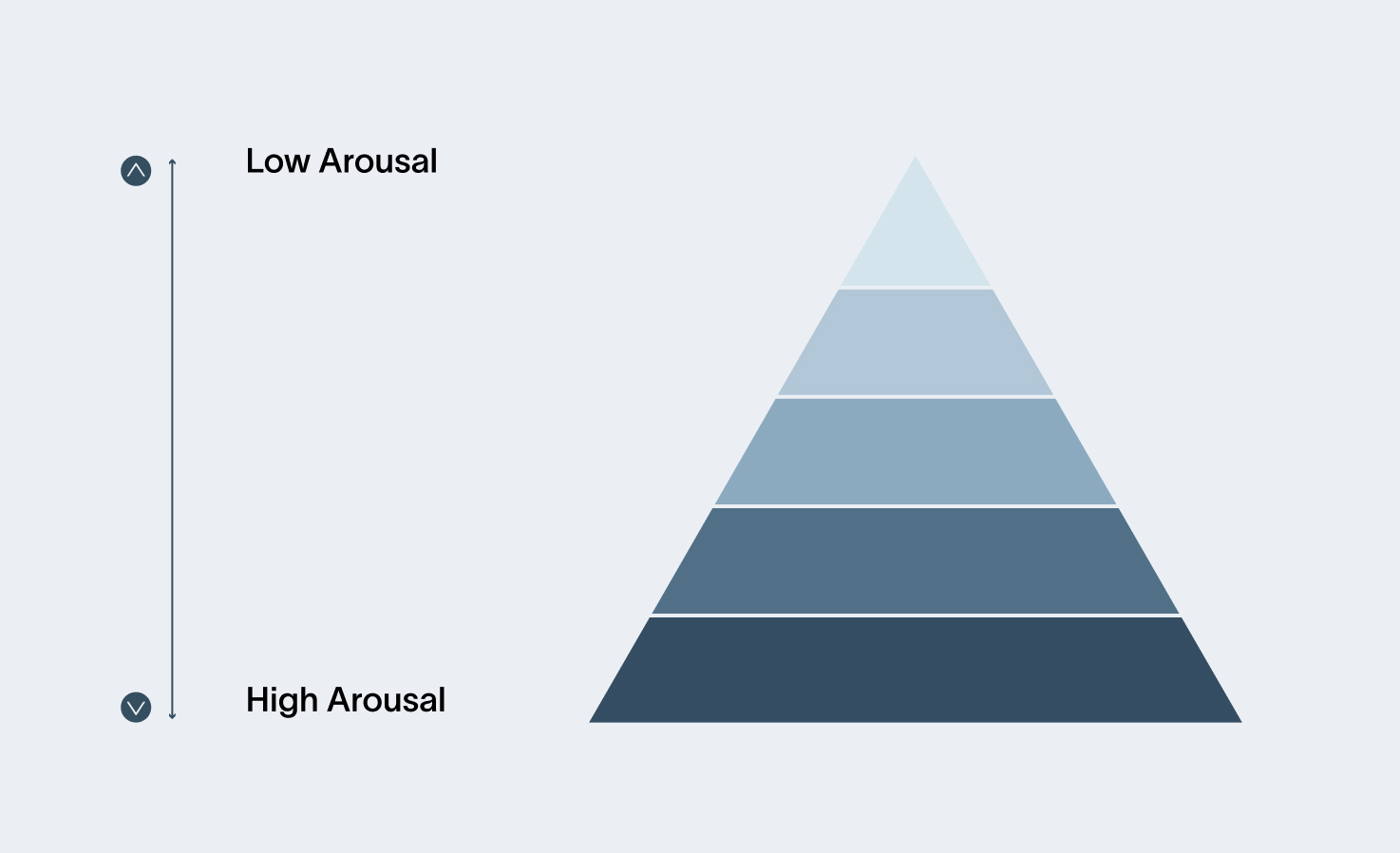How We Measure Stress Using Body Data and Self-Assessments
Stress is a severe economic burden, impacting productivity and individual well-being. According to the WHO, stress-related health issues cost the global economy at least $1 trillion annually—nearly 1% of global GDP. These costs are largely driven by eroding productivity levels, increased absenteeism, and higher employee turnover. Moreover, this staggering figure does not even account for the substantial healthcare expenses associated with stress. In the U.S. alone, stress is a contributing factor in 60 to 80% of all doctor visits.
The personal impact is also alarming: over 27% of adults report feeling overwhelmed by stress on most days that they struggle to function. The situation is even more concerning among younger generations, with 46% of those under 35 saying stress affects their ability to function on most days. The majority of people (76%) experience health impacts due to stress, including headaches, fatigue, feeling nervous or anxious as well as feeling depressed or sad.
Many of us are well aware of the toll stress takes on our work and well-being, yet reducing it can feel overwhelming, too. Stress drivers are deeply embedded in our daily routines and environments, making it hard to know where to begin. At Sapiens, we start by measuring stress through body data and self-assessments, providing a personalized picture of your stress levels and the factors driving them.
Measuring stress with precise body diagnostics
Your body holds a wealth of information, revealing the stress you experience in various life situations and which strategies effectively reduce it. To access your body data, we have developed a stress diagnostics kit that provides a deep dive into your stress profile. Using hair analysis, saliva testing, ECG monitoring, and self-assessment, this science-backed process reveals your internal and external stressors, resilience levels, recovery capacity, and the effects of chronic stress over the past three months.
Beyond identifying stress triggers, this process highlights the broader impact of stress on your physical and mental health. By uncovering the root causes of your stress reaction, you’ll gain actionable insights for building personalized, effective stress-reducing routines.

The benefits of stress diagnostics
Our stress diagnostics kit is tailored for individuals with intense jobs and high-pressure work environments. If five or more of the following criteria resonate with you, our approach could provide the support you need:
- Unpredictable and fluctuating workload
- Fast-paced work with tight deadlines
- Large scope of responsibility equivalent to managing multiple roles
- Work-related events outside regular work hours
- 24/7 availability to clients or stakeholders
- Accountability for profit and loss outcomes
- Responsibility for mentoring and recruiting
- Frequent travels
- Managing a large team or many direct reports
- Regularly working ten or more hours a day
Previous clients have significantly reduced chronic stress levels, improved sleep quality, increased recovery throughout their workweek, enhanced resilience scores, and minimized stress-related health risks.
This transformation happens through the combination of insights from our diagnostics report and integrated one-to-one coaching, which helps users in several key ways:
- Building self-awareness and body literacy to identify how specific daily activities drive stress and recovery.
- Prioritizing actionable changes in work and lifestyle routines that deliver the greatest improvements in stress management, resilience, daily energy, and overall health.
Our stress diagnostics offer a behavior change journey that builds positive momentum, greatly increasing the chances of lasting health-related improvements.
For clients who complete the diagnostics with their team, the benefits extend to team accountability and group-level behavior change support. We provide team-level diagnostic reports, allowing individuals to compare their personal results with team averages, fostering a collaborative environment for improvement.
How clients use our stress diagnostics to improve their performance and health
Stress impacts people differently depending on their roles, responsibilities, and life circumstances. Our stress diagnostics cater to diverse needs, providing tailored solutions for individuals and teams to overcome stress-related challenges and optimize well-being.
Preventative Health & Longevity
Senior professionals in demanding roles often worry about the long-term health impact of intense workloads. Our diagnostics identify key intervention areas and offer sustainable performance and well-being strategies.
Leadership Development
Stress often undermines leadership traits like creativity and empathy. Our diagnostics help leaders reduce stress, enhancing their ability to inspire and guide effectively.
Well-being Initiatives
Organizations committed to employee well-being often find stress to be a key obstacle. We help you find evidence-based solutions to reduce stress and enhance workplace satisfaction.
Burnout Prevention
Burnout builds gradually. Our diagnostics identify early signs, enabling proactive measures to maintain performance and protect health.
Daily Energy and Sleep Quality
Stress often leads to low energy and poor sleep. Uncovering root causes provides clear solutions to restore energy and improve rest.
Managing Transitions
Life changes like parenthood or career shifts increase stress. Data-driven and personalized strategies help to navigate transitions with greater balance.
Addressing Fatigue and Energy Leaks
Issues like fatigue and brain fog hinder performance. Through our diagnostics, we identify the underlying causes and recommend targeted solutions to address these challenges.
Stress: A complex experience that can’t be measured with wearable devices alone
Stress is a complex state where the body’s balance, or homeostasis, is disrupted. Yet, stress isn’t inherently bad; its effects depend on timing, context, and intensity. Positive stress, known as eustress, can enhance focus, arousal, and immune response, particularly when it’s acute and followed by recovery. On the other hand, distress occurs when stressors become overwhelming, leading to negative outcomes.
To get a nuanced understanding of your personal stress experience, we consider four different facets of stress in our diagnostics:
Stressors: Identifying the external (especially job-related) and internal sources of stress affecting you.
Resilience: Assessing your ability to withstand and recover from stressful events.
Stress Response: Evaluating how stressors impact your body, both in the short-term and over time.
Health Impact: Understanding the risks stress poses to your overall health and well-being.
While popular wearables like Fitbits, Apple Watches, and similar devices offer basic insights into stress and recovery, they primarily rely on a limited set of biomarkers—most notably, approximations of Heart Rate Variability (HRV). This narrow focus prevents them from truly addressing the core factors driving stress and recovery.
At Sapiens, we’ve taken a more comprehensive approach. Working closely with our scientific advisors, we’ve identified the most relevant biomarkers and integrated them with scientifically validated self-assessments to measure all key aspects of stress with greater depth and accuracy.
Measuring stress through biomarkers and self-assessments
Our diagnostics employ a multi-modal approach, leveraging over 13 biomarkers and 5 scientifically validated self-assessments. This process generates more than 200 data points, providing a detailed and nuanced picture of stress and its effects on your body and mind.
Measuring biomarkers
Hair Analysis: Provides a biological view of chronic stress and resilience factors with a three-month retrospective perspective. This includes measuring Cortisol, Cortisone, DHEA, Testosterone, and Endocannabinoids to give a comprehensive picture of stress over time.
ECG Monitor: Offers highly accurate HRV (Heart Rate Variability) analysis over the course of a workweek, far surpassing the precision of traditional wearable devices. This allows for minute-by-minute tracking of stress levels, seamlessly integrated with your calendar and daily activities for contextual insights.
Saliva Analysis: Delivers insights into daily hormonal patterns, such as your ability to ramp up energy levels after waking and wind down in the evening. This is achieved through multi-day, multi-time-point measurements of saliva cortisol and DHEA levels.
Evaluating Self-assessments
Perceived Stress Score: Measures your subjective experience of stress and its impact on your life.
Brief Resilience Scale and Brief Resilience Coping Scale: Assess your ability to recover from stress and cope with challenges effectively.
Energy Leak Assessment: Evaluates symptoms related to 15 common “energy leaks,” such as metabolic health, dehydration, micronutrient deficiencies, and lifestyle fragmentation.
Resilience Habits Assessment: Examines key habits influencing resilience, including sleep, nutrition, fitness, social connections, and mindset.
Optional Self-Assessments: Includes additional tools to evaluate mobility, burnout risk, and in-depth reviews of nutrition and sleep quality.
It takes only one hour to measure all aspects of stress
We have streamlined the user experience to make stress diagnostics as effortless as possible, continuously reducing the friction of the testing process. Here’s how it works:
Test Kit Delivery: The test kit with four different tests is delivered directly to your home.
Choose an Average Week: You pick a regular workweek for the testing period. You complete these tests between Monday and Saturday morning.
Minimal Effort Required: Completing the measurements takes less than an hour in total throughout the week.
Seamless Testing Process: Clear, easy-to-follow instructions guide you through each step. Saliva and hair tests require minimal effort and are conveniently packaged with pre-labeled envelopes for doorstep pickup. Setting up the ECG monitor is quick and straightforward, taking less than five minutes.
Personalized Report & 1:1 Coaching: Within a few days of completing the tests, you’ll receive a personalized report detailing your stress profile. This is followed by a one-on-one session with your coach to review your results and co-create science-backed interventions tailored to your needs.
Team Comparison (if applicable): If you have completed the diagnostics alongside your team, your results will be compared to the team average. This offers insights into areas where you may experience more stress or recover more effectively than peers in similar roles.
By the end of the process, you’ll gain a comprehensive understanding of your stress profile and receive actionable strategies to enhance your resilience, recovery, and overall well-being.

.jpg)

.jpg)




.jpg)
.png)
.jpg)
.png)
.png)














.jpg)